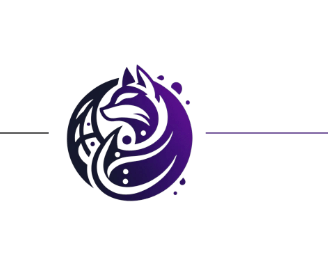Beyond The Deadline
3 generations, 3 cultures, 1 crazy project! Learn how a neuroscientist, magician & manager navigate chaos with clear communication & unconventional solutions!
GLOBAL TEAMWORKMULTICULTURALISMPROJECT MANAGEMENTEFFICIENT COMMUNICATIONMULTIGENERATIONAL COLLABORATION
Aria Caffaratti, MBA, PMP
7/18/20244 min read


“The client expects us to deliver in October, but the initial proposal should be sent by the 20th of July,” — John (let’s call him that) said.
“They’re all in. They’re invested. They know what we can do. It’s a closed deal already,” he continued talking as I scribbled on a piece of paper. Too many questions: What’s the budget? What about the logistics? What’s the scope here?
“Let’s just take time to think about it and put something together. It’s fine, we’re all going to Italy this fall!” — John flashed his pearl-white smile into the camera.
Tom (another colleague, not his real name) was awfully quiet. Scientists can be that way, but this silence was suspicious.
Sometimes our gut warns us: it’s not going to work out / this is going to be one hell of a ride.
At work, I’m a logical person. But I came to accept that a good intuition is sometimes akin to a well-educated guess. I just knew it: we will not make it.
I have a deadline this Saturday, and it’s clear as day: we‘re behind. I will skip the part where I’m disappointed with our work and how I did not see this coming. There are many ways to justify myself and the team. However, it’s a great opportunity to take a step back and reflect.
At this point in my professional life, I came to several conclusions:
Effort and attitude are incredibly important — they make you or break you. But if the goal is not attained, it’s a wasted opportunity. Perhaps my Baltic roots can explain this: don’t cry over spilled milk, better yourself, and avoid it next time. And there’s no point in crying about how much work went into cleaning the mess — isn’t it our incompetence that caused the issue in the first place?
Sometimes failure is inevitable and learning how to accept it is important. Digesting our failures and turning them into valuable lessons for the future can serve as inspiration for tomorrow. Next time will be better. But we need to keep the door open — for those next times to come.
Perfectionism leads to micromanagement and combined they lead to obsessions. It doesn’t matter if you are good at seeing the bigger picture and managing accordingly. What matters is if you can convince your team to trust — and follow! — the process.
There will be difficult clients and complicated team members, so your task is to become the flexible mediator and find a middle point. I realized that as much as my competencies relied on project and operations management, the magic success formula was figuring out humans. Being flexible, diplomatic, and open to change and different ways of working is key. Sometimes we need to wear different professional hats as well as several personalities. Own it.
Success is overhyped. Set SMART goals (specific, measurable, achievable, and time-bound) and be realistic. Milestones build up. The sense of achievement boosts our motivation. One day you wake up and realise that a massive project just got delivered. Yet you’re not burnt out and life is looking good.
I suppose experience brings a sense of calmness. I might not deliver this Saturday, but I’m confident: we will deliver. This project appeared at the last minute — instructions unclear, too many stakeholders, and a scattered multicultural team. Perhaps it’s also the magic of working on something…new?
We’re colleagues — but then we’re not.
We have a project — but then we don’t.
Here’s what I’m dealing with:
Three professionals coming from different backgrounds: neuroscience, magic, and management.
Three sociocultural contexts: an American, an Argentinian-Italian, and a Lithuanian-British (if we add to the mix how many countries we live(d) in, it would be even more confusing!).
Three generations: boomer, X, and a millennial.
It’s lucky enough that somehow we all ended up living in the USA! However, united by geography we are divided by our time zones.
Our work standards and professional approaches are different:
As the oldest of us, John views the world in a more traditional way. However, being the most experienced he has an extensive pool of contacts and resources. Hence the project.
Tom is a force of nature, but he squirrels around the information. As a neuroscientist, he tends to do research and extensive reading before suggesting any ideas. He finds deadlines stressful and tends to work best when left to his own devices. He also forgets to update our Monday.com boards because they seem irrelevant to him.
I’m process-driven and nurtured in a corporate environment, so perhaps sometimes least flexible of us three. Deadlines should be met and KPIs should be delivered. As the youngest and tech-savvy member of the team, I find myself suggesting innovations and reaching out for opportunities. These don’t always land well with John or Tom.
Add our odd client to the mix — an Italian-based multinational corporation — and you have a recipe for a good time!
We have a different understanding of time and deadlines
We have a different sense of urgency
What excites John makes me question the value delivered
Tom’s scientific ideas fail to communicate in a human language
My business approach doesn’t make sense to creative John and academic Tom
Overall, it’s an adventure, but an exciting one!
I take it upon myself to reflect on our different work standards and practices, consider the peculiar requirements of the client, and accept the challenges we’re facing. I’m sure that anything can be overcome with clear communication, flexibility, and a willingness to embrace the magic of unconventional approaches.
Sometimes the normal way is not the way. Unique projects require imaginative solutions. We only need to find them!




